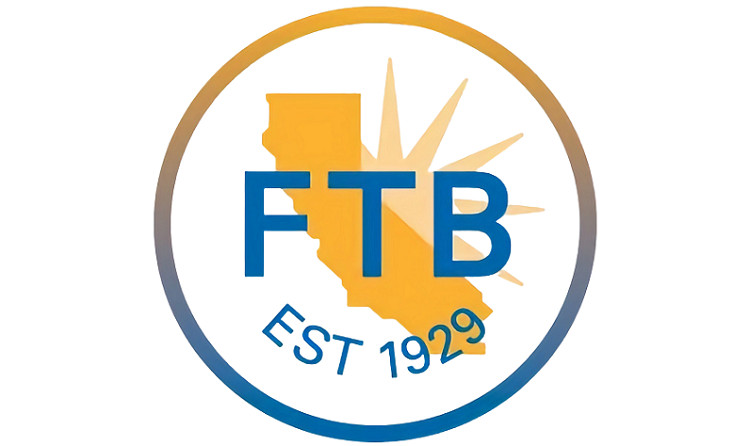- Bottom Line Up Front
- Differences Between Dissolution and Termination of LLC in California
- Reasons for Closing an LLC
- Dissolving an LLC in California
- The Process of LLC Dissolution in California
- How to Wind Up an LLC in California
- Franchise Tax Board Requirements (FTB) for Dissolving an LLC
- California Secretary of State (SOS) Requirements for Dissolving an LLC
- Forms LLCs Must File with The Secretary of State
- The Cost of Dissolving an LLC in California
- Benefits Associated with Rightful Dissolution Process of an LLC
- FAQs
- Closing
Last Updated on December 4, 2023 by Ewen Finser
It’s not uncommon for business owners to close LLCs. The eagerness to move on to other opportunities or the drain of continued upkeep can motivate LLC owners to shut down their businesses.
But dissolving an LLC is more complicated than just stopping operations. California has a process set in place to officially and legally cancel an LLC that’s no longer in operation. This process, and by extension, ensuring that the LLC is out of the reach of creditors, begins with dissolution.
Failure to follow the proper steps and procedures often results in tax liabilities, penalties, and legal problems. In some situations, the court may decree a judicial dissolution, but the LLC’s members will vote to dissolve in most cases.
Noteworthy, the California secretary of state (SOS) and the Franchise Tax Board (FTB) have requirements that LLCs must meet before ceasing to exist. This article will discuss all the steps LLC owners need to take to close an LLC in California properly.
Bottom Line Up Front
Closing an LLC starts with the dissolution process. The dissolution process entails the LLC’s members voting to end the business.
Once the vote is official, the LLC files a dissolution form with the SOS. The LLC must also comply with FTP requirements which entails filing a final tax return and paying any remaining taxes. The business will then wind up the company’s affairs and notify all creditors that the LLC is no longer in operation.
Differences Between Dissolution and Termination of LLC in California
The main difference between dissolution and termination is that dissolution is a prerequisite for termination. In other words, an LLC cannot terminate until it dissolves first.
However, once an LLC dissolves, it only exists as a legal entity to wrap up its affairs. After that, the LLC is no longer a legal business entity in California and cannot carry on any business except settle its debts and distribute its assets.
Reasons for Closing an LLC
Members’ disagreement is often the primary motivator for LLC owners to close their businesses. Other reasons may include:
- The LLC has run its course, and the members want to move on.
- The LLC isn’t generating enough revenue to sustain itself.
- The members can’t agree on critical decisions regarding the business.
- One or more members want to leave the LLC, and dissolving is the best way to handle the situation.
- The LLC has faced lawsuits or other legal problems that drain the business’s resources.
- The LLC is facing bankruptcy and can’t continue operating.
Dissolving an LLC in California
Dissolution means that the LLC is no longer a legal entity in California. Once an LLC dissolves, it can no longer conduct business in the state, and its members are not liable for the debts and obligations of the company. The LLC also can’t own property or enter into contracts.
There are two ways to dissolve an LLC:
- Voluntary dissolution: LLC members can vote to dissolve the company.
- Involuntary dissolution: If the LLC doesn’t follow state laws or its members can’t agree on critical decisions, a court may order the dissolution of the LLC.
This article will focus on the voluntary aspect of LLC dissolution since it’s the most common.
The Process of LLC Dissolution in California
Below are the steps LLC owners need to take to dissolve their business in California:
1. Check the Company’s Governing Documents
During the formation of an LLC, members create an operating agreement. This document outlines the LLC members’ roles, responsibilities, and how the business will run.
The LLC’s operating agreement may have a provision that outlines what happens if the members want to dissolve the company. The article of association may also include a provision for dissolution.
Common steps for dissolution may include:
- Notifying members: The LLC must provide written notice to all members of the impending dissolution. This notice should include how the LLC will vote on dissolution and the date of the vote.
- Voting on dissolution: A majority of the LLC members must vote in favor of dissolution for it to pass.
- Recording the vote: The LLC must record the vote in the company’s minutes or bylaws.
- Distribute assets: After the vote passes, the LLC must distribute its assets to the members. The distribution should be in proportion to each member’s ownership stake in the business.
- Notice to creditors: The LLC must notify all creditors of the company’s dissolution. The notice should include how to file a claim against the LLC and the deadline for doing so.
Depending on the LLC’s operating agreement, these steps may be different. As such, members must review the governing documents before taking action to dissolve the business.
2. Closing Business Tax Accounts with Relevant Authorities
An LLC must close all business tax accounts with the relevant state and federal authorities before it can dissolve. This step is critical because the LLC will continue to accrue penalties and interest on unpaid taxes.
To close the LLC’s state tax accounts, members should contact the following:
- Employment Development Department (EDD)
- Franchise Tax Board (FTB)
To close the LLC’s federal tax accounts, members should contact the following:
If the business had employees, the LLC must also file employment withholding tax returns for the final pay periods, disability tax, and unemployment insurance tax. For those businesses that sell or hold taxable inventory, the LLC must file a final sale and use tax return. The forms for these filings are available from relevant state agencies.
3. Filing the Articles of Dissolution with the California Secretary of State
California has three different articles of dissolution, depending on the LLC’s status. Articles of dissolution are essentially a notice to the state that the LLC is no longer doing business. Once any of these forms are filed, the LLC is legally dissolved.
The three forms include:
- Short Form Cancellation Certificate
The short form cancellation certificate is for LLCs that have been in good standing with the state and have no known debts or liabilities. The LLC must have been formed within the past 12 months, submitted all final returns, and distributed assets, and more than 50 percent of voters are for the cancellation.
- Certificate of Cancellation
If the LLC doesn’t qualify for the short form certificate and more than 50 percent of members agree with the dissolution, the LLC can file a certificate of cancellation.
- Certificate of Dissolution
A certificate of dissolution is for entities that can’t answer yes to the requirements of a short form cancellation certificate and that less than 50 percent of members agree for dissolution.
- Notify Creditors and Other Claimants
California law mandates that LLCs notify all creditors and other claimants before dissolution. The LLC must provide claimants with a physical address, email address, and telephone number where they can send their claims.
The LLC must also give claimants a deadline for filing their claim. An attorney can help develop proper wording for the notice and determine an appropriate deadline.
How to Wind Up an LLC in California
Winding up an LLC comes after the company has officially dissolved. After the dissolution, an LLC continues to exist but only to wrap up affairs. During the winding-up process, the LLC cannot conduct any business. This process includes paying or providing provisions to pay debts, defending and prosecuting actions against the LLC, liquidating assets, and collecting then dividing assets.
California’s LLC act provides a winding-up process that all LLCs must follow. Once the dissolution process is complete, the LLC can take these final steps.
1. Defending or Prosecuting Actions
After an LLC has dissolved, it can still defend or prosecute actions started before the dissolution. The company must have a valid reason for defending the action, such as the company’s property is still at risk.
2. Pay or Provide Provision to Pay Debts
An LLC must pay all debts and liabilities before being officially wound up. The LLC can either pay the debts in full or make provisions to pay the debts. It may include setting up a payment plan or selling assets to raise money to pay off debts.
If any of the members are creditors, they must be treated the same as any other creditors. They cannot be given preferential treatment just because they are members. The LLC must pay all debts in full before any assets can be distributed to members.
3. Pay Interim Distributions to Members
Once all debts and liabilities have been paid, the LLC can make interim distributions to members. These are distributions of money or other assets made before the final distribution. Unless the documentation (Operating Agreement) says otherwise, members are entitled to distributions that equal their contributions.
4. Make a Final Distribution of Assets
Company assets must be distributed to members after all debts have been paid. The final distribution should be laid out in the LLC’s Operating Agreement. If there is no Operating Agreement, assets must be distributed fairly and equitably or in direct proportion in which the members contributed to the LLC.
Franchise Tax Board Requirements (FTB) for Dissolving an LLC
The California Franchise Tax Board is responsible for collecting taxes for the state. When an LLC dissolves, it must notify the Franchise Tax Board of the impending dissolution.
Below are other requirements that the Franchise Tax Board has for LLCs.
- File all delinquent tax returns.
- Pay any outstanding tax liabilities, including interest and penalties.
- The LLC should stop doing business in California and cancel all licenses.
The FTB will send a notice of dissolution to the LLC’s last known address. The LLC is responsible for any tax liabilities even after it has received the notice of dissolution.
California Secretary of State (SOS) Requirements for Dissolving an LLC
The SOS office is responsible for issuing licenses and permits and maintaining business records. When an LLC is dissolved, it must notify the SOS office.
Below are the dissolution requirements set forth by the SOS.
- File a dissolution surrender form with the SOS within 12 months since the company filed returns
If the company had been suspended or forfeited, it must file for a certificate of revival. The LLC must remain in good hands with the state to avoid any legal issues in the future.
The following steps outline the revivor process:
- File any outstanding tax returns
- Pay any outstanding tax liabilities, including interest and penalties
- Apply for a certificate revivor (use this form)
The Secretary of State’s office won’t accept dissolution documents previously rejected by the Franchise Tax Board.
Forms LLCs Must File with The Secretary of State
The California SOS website provides all the forms an LLC needs to file for dissolution. When you’re filling out the forms, make sure to have the following information handy:
- The name of your LLC
- The date of dissolution
- The reason for the dissolution
- LLC number
- The name and contact information for a person authorized to wind up the LLC’s affairs
Below are the dissolution forms provided by the SOS:
- Certificate of dissolution (LLC-3)
- Short Form Certificate of cancellation (LLC-4/8)
- Certificate of cancellation (LLC-4/7)
The Cost of Dissolving an LLC in California
The state of California doesn’t charge a fee to dissolve an LLC. However, if you delivered the documents in person at the Sacramento office, there is a $15 filing fee. The time frame for an entire dissolution process can take up to 60 days, but if you want your documents processed faster, you can pay an additional amount for expedited service.
Other states may have different requirements and fees for dissolving an LLC. Check with your state’s business entity division for more information.
Benefits Associated with Rightful Dissolution Process of an LLC
Dissolving an LLC comes with several benefits, including:
- Settling debts and liabilities: Once the LLC is dissolved, its members are no longer liable for its obligations and liabilities.
- Winding up business affairs: The dissolution process allows the LLC to wind up its business affairs orderly. It includes selling assets, transferring records, and distributing assets to members.
- Terminating contracts: When an LLC is dissolved, it can terminate contracts no longer needed, such as leases, insurance policies, and vendor agreements.
- Final tax return: Filing a final tax return allows the LLC to close its books and end its business relationship with the IRS.
- Frees up resources: Once the LLC is dissolved, its members are free to pursue other business opportunities.
Although closing an LLC isn’t the most exciting thing, the freedom that comes with it might be worth the hassle. If you’re sure that dissolving your LLC is the right decision, follow the steps above to do so correctly and avoid any legal complications down the road.
FAQs
Question: What is the Difference Between Dissolution and Cancellation of LLC?
Answer: Dissolution is the legal process of ending an LLC’s existence. On the other hand, cancellation is ending an LLC’s registration with the state. Once an LLC is dissolved, it can no longer conduct business in the state, and its members are no longer liable for its debts and liabilities.
Question: Is Dissolution, Winding Up, and Termination the Same?
Answer: Dissolution is the first step of the LLC termination process. Once an LLC is dissolved, its members can start winding up the business affairs, including selling assets, transferring records, and distributing assets to members. After the winding-up process is complete, the LLC is terminated.
Question: What Does it Mean to Liquidate an LLC?
Answer: Liquidating an LLC means converting its assets into cash. The process of liquidation can be done through various methods, such as selling assets, transferring records, and distributing assets to members. The primary purpose of liquidation is to settle the LLC’s debts and liabilities.
Closing
Understanding how to close an LLC in California is essential for anyone thinking about dissolving their business. The process is relatively simple, but there are a few key things to keep in mind to ensure it’s done correctly. First, you’ll need to file a Certificate of Dissolution with the Secretary of State.
You’ll also need to notify any creditors of your intention to dissolve the LLC and settle any outstanding debts. Finally, you’ll need to file a final tax return and terminate any contracts or leases associated with the business. By following these steps, you can ensure a smooth and hassle-free dissolution of your LLC.






